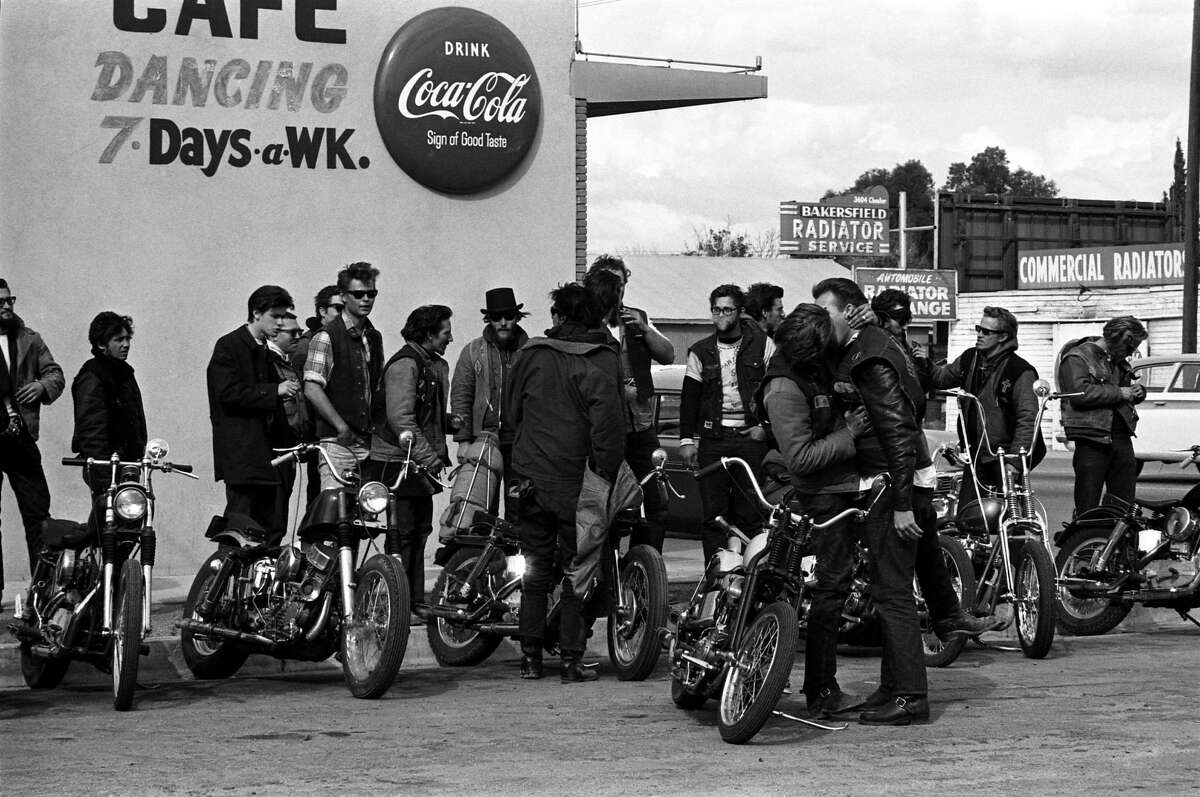Hells Angels Motorcycle Club: Facts And Figures

Table of Contents
A History of the Hells Angels Motorcycle Club
The Hells Angels Motorcycle Club traces its roots back to 1948 in San Bernardino, California. Its founding members, many of them veterans of World War II, established a club initially focused on camaraderie and motorcycle riding. However, the club's evolution over the decades has been marked by significant shifts in its image and activities. The early years saw a focus on biker culture, but the HAMC gradually became intertwined with criminal activities, leading to its current notoriety as an outlaw motorcycle gang.
- Founding: 1948, San Bernardino, California.
- Early Members: The initial membership comprised primarily World War II veterans, reflecting the post-war context of their formation. Many were drawn to the sense of brotherhood and rebellion the club offered.
- Significant Events: Key events throughout the HAMC's history, such as clashes with law enforcement and internal power struggles, shaped its identity and cemented its outlaw image. These events have been extensively documented, although interpretations often differ depending on the source.
- Evolution of Symbolism: The club's iconic death's head logo and other symbols have become widely recognized, reflecting its rebellious and often defiant nature. The evolution of these symbols provides insight into the club's evolving identity and self-perception.
Global Presence and Chapter Structure
The Hells Angels Motorcycle Club boasts a significant global presence, with chapters operating in numerous countries. While the exact number of chapters fluctuates, it's understood to be substantial, signifying the club's international reach and influence. The club operates under a hierarchical structure, with a defined chain of command and specific roles for its members within each chapter. This organizational structure enables efficient communication and control across the global network.
- Approximate Number of Chapters: While precise figures are difficult to obtain due to the secretive nature of the organization, sources suggest a large number of chapters across several continents.
- Geographic Distribution: The HAMC has a strong presence in North America, Europe, and Australia, among other regions. The geographic distribution of chapters reflects the club's international expansion and its strategies for establishing and maintaining power.
- Hierarchical Structure: The club's structure generally includes a president, vice president, sergeant-at-arms, and other officers responsible for managing the affairs of each chapter. This hierarchical structure fosters discipline and control within the organization.
- Membership Requirements: The criteria for becoming a full-fledged member of the Hells Angels are shrouded in secrecy and are believed to involve a rigorous initiation process and an intense commitment to the club's values and activities.
Activities and Controversies
The Hells Angels Motorcycle Club's activities have been the subject of extensive scrutiny and legal action. While the club officially maintains a focus on motorcycle riding and camaraderie, numerous allegations of criminal activity, including drug trafficking, violence, and extortion, have plagued its history. It is crucial to approach these allegations with caution and rely only on well-sourced information. This section will avoid sensationalism and focus on verifiable facts.
- Allegations of Criminal Activities: Numerous law enforcement investigations and court cases have implicated the HAMC in various criminal activities. These cases need to be examined within the legal context, with careful consideration given to due process and the presumption of innocence.
- High-Profile Legal Cases: Several high-profile legal battles have shaped the public perception of the Hells Angels and their activities. These cases provide valuable insight into the club's internal dynamics and its interactions with law enforcement.
- Official Club Statements: The HAMC rarely issues public statements addressing allegations against them. Any available statements should be assessed critically within the context of the broader allegations.
- Public Image Management: The club has, at times, attempted to manage its public image, but this is generally countered by ongoing criminal investigations and legal actions.
Membership Demographics and Profile (if data available)
Reliable data on the demographic profile of Hells Angels members is scarce due to the secretive nature of the organization. However, based on available information from various sources, the members are typically male and fall within a broad age range. It is important to avoid generalizations and stereotypes when discussing membership demographics.
- Average Age Range: (Data not reliably available for public disclosure)
- Common Backgrounds: (Data not reliably available for public disclosure. Avoiding generalizations is crucial to responsible reporting)
- Selection Process: The process for new members is shrouded in secrecy, creating further mystery around the club.
Conclusion
The Hells Angels Motorcycle Club remains a complex and controversial entity. Understanding its history, structure, and activities requires a nuanced approach, relying on responsible reporting and verifiable information. This article has attempted to present a balanced overview, separating fact from fiction while acknowledging the inherent difficulties in accessing accurate data about a secretive organization like the HAMC. The club's history is intertwined with both legitimate motorcycle culture and alleged criminal activities, making it a multifaceted subject that demands careful and critical analysis.
Want to delve deeper into the history and activities of the Hells Angels Motorcycle Club? Explore further with responsible and fact-checked sources. Remember to approach any information critically, considering multiple perspectives and verifying information through reputable sources.

Featured Posts
-
 Sexisme Et Machisme Dans Le Milieu Mediatique L Impact Des Revelations Sur Ardisson
May 26, 2025
Sexisme Et Machisme Dans Le Milieu Mediatique L Impact Des Revelations Sur Ardisson
May 26, 2025 -
 Wounds Visible In Photo Of Kidnapped Israeli Soldier Matan Angrest
May 26, 2025
Wounds Visible In Photo Of Kidnapped Israeli Soldier Matan Angrest
May 26, 2025 -
 Severe Weather Awareness Week Day 5 Flood Safety Guide
May 26, 2025
Severe Weather Awareness Week Day 5 Flood Safety Guide
May 26, 2025 -
 Canyon Aeroad Unveiling Mathieu Van Der Poels Custom Bike For Tirreno Adriatico
May 26, 2025
Canyon Aeroad Unveiling Mathieu Van Der Poels Custom Bike For Tirreno Adriatico
May 26, 2025 -
 Manuel Neuers Injury A Setback For Bayern Munichs Season
May 26, 2025
Manuel Neuers Injury A Setback For Bayern Munichs Season
May 26, 2025
